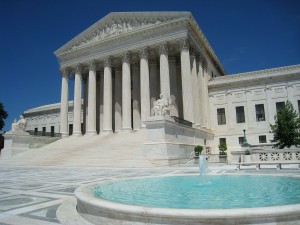Demystifying the Process of Federal Appeals: What You Need to Know
Navigating the detailed realm of government charms can often appear like going across undiscovered waters for those not familiar with the procedure. Comprehending the subtleties of appellate court jurisdiction, the intricacies of submitting a notification of charm, offering an engaging quick, and making a convincing oral disagreement are important components that can considerably impact the outcome of an instance. By untangling the layers of intricacy bordering federal appeals, people can obtain a more clear insight into the mechanisms that control this essential phase of the legal system.
Understanding Federal Appeals Refine
Delving into the intricate world of the federal allures procedure reveals a structured and systematic trip with the judicial system - alaska federal appeal attorneys. Federal allures function as an important mechanism for reviewing choices made by reduced courts. Understanding this process is essential for any individual entailed in legal procedures at the government level
The process commonly begins with a celebration disappointed with a lower court's ruling submitting a notification of appeal. This sets off a testimonial by a higher court, where a panel of judges examines the lawful debates presented by both celebrations. Briefs laying out the legal reasoning behind each celebration's placement are sent, and dental arguments may be heard to clear up intricate concerns.
The appellate court's decision is based on a detailed examination of the lower court's procedures and the arguments provided. The judges do not review realities yet concentrate on whether lawful mistakes occurred that impacted the lower court's decision. Once the appellate court reaches a decision, it can verify, reverse, remand, or customize the lower court's judgment, providing clearness and finality to the lawful dispute. Comprehending this process is vital for browsing the complexities of federal appeals effectively.
Appellate Court Jurisdiction Described

Appellate courts have territory over specific kinds of cases, usually those including lawful mistakes, step-by-step concerns, or inquiries of regulation instead of valid disagreements. The territory of appellate courts is normally laid out in laws and laws that control the court system. Comprehending appellate court jurisdiction is important for celebrations included in the charms process as it identifies whether an instance is qualified for review and the level to which the appellate court can intervene in the reduced court's choice.
Filing a Notice of Appeal
The first action in starting the government charms process involves filing a Notice of Charm with the proper appellate court. federal appeals attorneys in south dakota. This vital file officially informs the court and the various other celebrations entailed in the situation that the appealing event means to look for a review of the reduced court's decision. Submitting a Notice of Charm is a rigorous procedural need that sets the appellate procedure in motion
When preparing the Notice of Allure, it is important to make certain compliance with the details rules and standards of the pertinent appellate court. The file has to generally consist of details such as the case name, the reduced court's name, the day of the judgment being appealed, and a concise statement showing the grounds for the charm.
When submitting a Notification of Appeal,Timeliness is of the significance. Missing out on the deadline for sending this document can lead to the charm being dismissed, highlighting the value of timely and precise initiation of the charms procedure. It is advisable to seek legal support to browse the complexities of filing a Notification of Allure successfully.
Briefing and Oral Disagreement
In the appellate procedure, presenting written briefs and involving in oral arguments play pivotal roles in promoting for the appealing event's placement before the appellate court. Briefs are extensive lawful records that lay out the events' disagreements, lawful authorities, and analysis supporting their settings. These composed submissions supply the court with a comprehensive understanding of the truths of the situation, the pertinent law, and why the appealing celebration believes the reduced court's choice need to be rescinded.
Adhering to the submission and review of the briefs, oral disagreements provide the parties a possibility to additional clarify their placements, attend to any type of concerns the appellate courts might have, and emphasize key points from their written briefs. Oral debates are a possibility for the attorneys to persuade the judges with verbal campaigning for and responses to inquiries from the bench.

Obtaining the Appellate Court Choice

Final Thought
To conclude, the federal allures process is a facility however crucial action in looking for justice. Comprehending the appellate court territory, submitting a notice of charm, preparing briefs, and presenting dental arguments are all essential elements of this procedure. Eventually, obtaining the appellate court choice can offer quality and resolution to lawful disputes. It is essential to navigate the government appeals process with persistance and interest to information to accomplish a fair end result.
As we advance from comprehending the federal charms process to exploring the complexities of appellate court jurisdiction, an essential element comes to light concerning the authority and limits of these greater courts in the lawful landscape. Appellate court territory refers to the extent of cases that a particular appellate court has the power to assess and determine upon. Unlike test courts that listen to instances for the first time, appellate courts are restricted to reviewing decisions made by lower courts. Understanding appellate court jurisdiction is essential for parties involved in the allures procedure as it figures out whether an instance is eligible for evaluation and the level to which the appellate court can intervene in the lower court's decision.
Whether the appellate court verifies, turns around, or remands the reduced court's decision, understanding the implications of the judgment is vital for all events included in the appellate procedure.